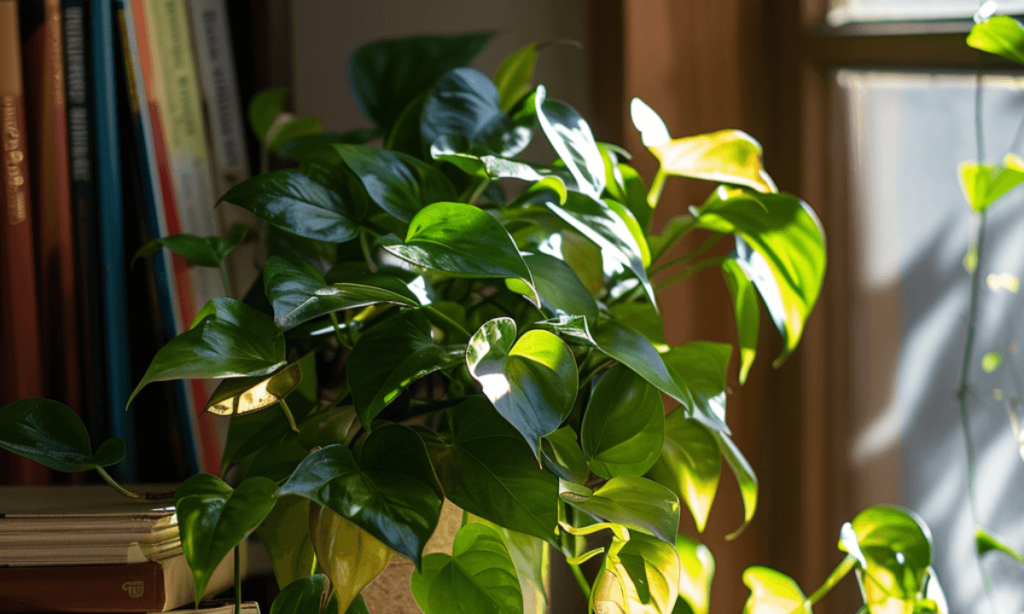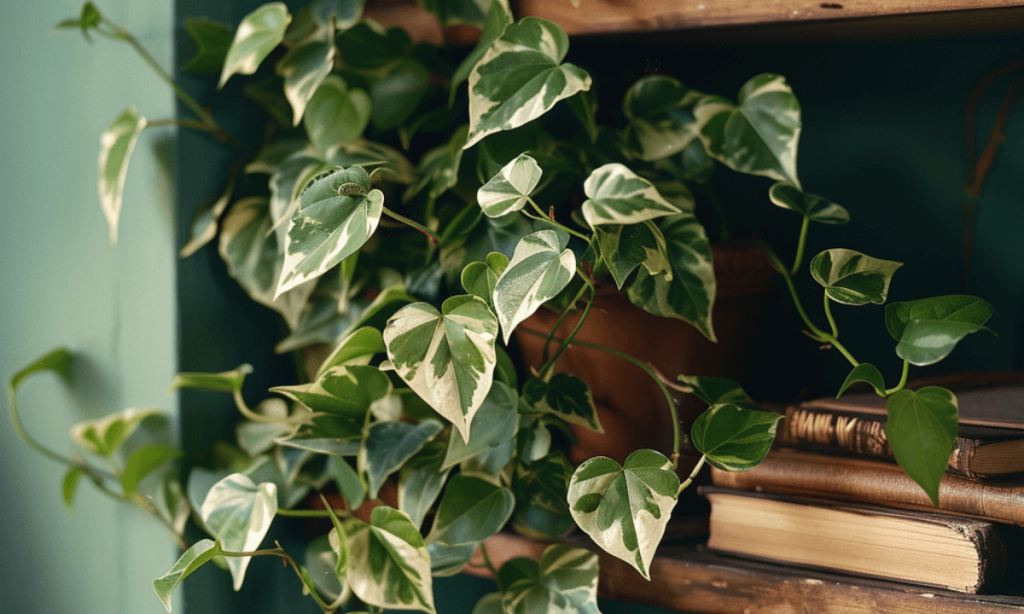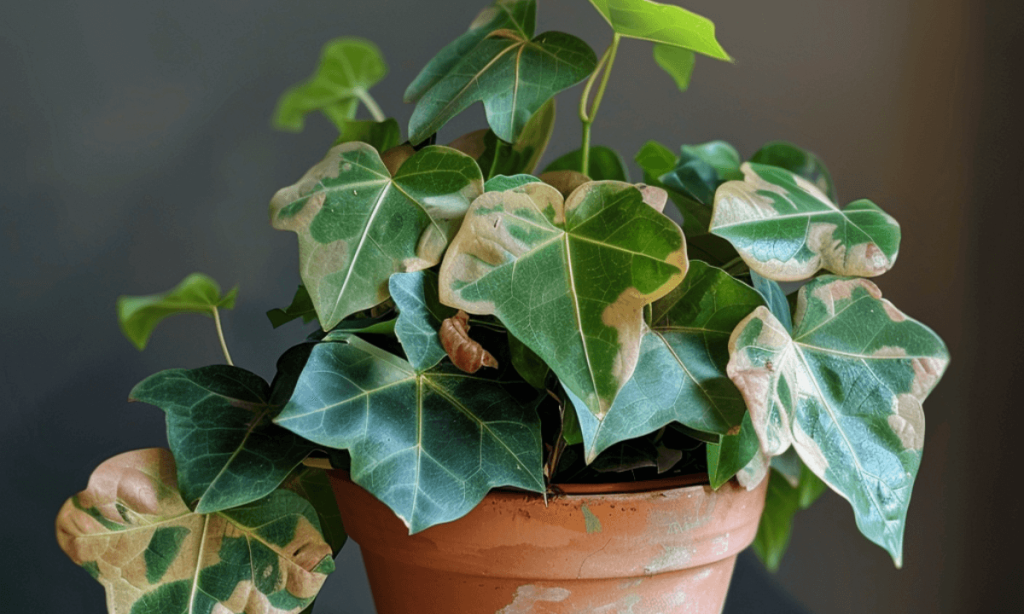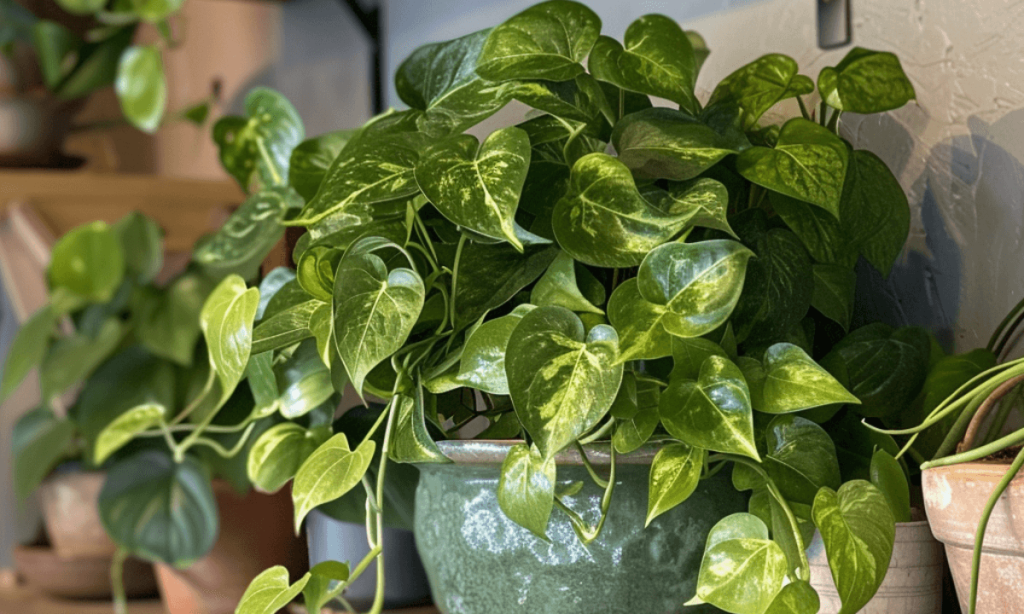Devil’s Ivy, also known as Epipremnum aureum or Pothos, is a popular houseplant originating from the Solomon Islands. This vine is part of the Araceae family and features heart-shaped leaves in variegated, golden, or green shades. With the right care, it can climb up to 20 feet, making it a striking indoor feature.
Watering is crucial for Devil’s Ivy’s health. Without proper hydration, its leaves can wilt, making it prone to pests and diseases. In this guide, we’ll explore how to water Devil’s Ivy effectively to ensure its long-term well-being.
Understanding Devil’s Ivy watering needs
To water Devil’s Ivy correctly, understand its specific needs. As a tropical plant, Devil’s Ivy prefers consistently moist soil but can tolerate short dry spells. Balancing is essential: overwatering leads to root rot, while too little can cause the leaves to wilt and yellow. When determining how to water, consider the following factors:
Frequency of watering
Watering Devil’s Ivy is influenced by factors like plant size, pot type, temperature, and humidity. Typically, water the plant once a week or when the top inch of soil feels dry. But, avoid a strict routine; instead, watch the plant’s specific needs.
The size of the plant and its pot affects water retention. Larger plants might need more water than smaller ones. Regularly check the top inch of soil for moisture, as it indicates the plant’s watering needs.

Temperature and humidity also influence watering frequency. Warmer conditions might mean watering more often, while cooler, humid environments might mean less watering.
Look for signs of water stress in the plant, such as wilting or dryness. However, avoid overwatering to prevent root rot. Regularly observe and adjust your watering to keep your Devil’s Ivy healthy.
Amount of water needed
Watering Devil’s Ivy is influenced by the plant’s size and its pot. When watering, ensure the soil is saturated, and water drips from the pot’s bottom, indicating the roots have received enough. However, avoid letting the plant sit in standing water to prevent issues like root rot. After watering, remove any excess water from the saucer or tray. Maintaining the right moisture balance and ensuring good drainage is vital for the health of your Devil’s Ivy.
Ideal time of day to water
Watering Devil’s Ivy in the morning or early afternoon is ideal, as it gives the plant time to absorb and utilize the water throughout the day. Avoid watering in the evening to prevent moisture from lingering on the leaves, which can promote fungal growth. Ensure the foliage is dry before nighttime to minimize disease risks. Following this routine supports the plant’s health and vitality.
Factors to consider before watering
Before watering your Devil’s Ivy plant, consider these key factors to ensure proper care and maintain the plant’s health:
Type of pot
The type of pot for your Devil’s Ivy can influence its water needs. Different materials affect moisture retention and root airflow.
Plastic pots retain moisture longer than clay pots. If your Devil’s Ivy is in plastic, it might need less frequent watering. However, monitoring soil moisture is essential to prevent overwatering.
Clay pots, being porous, allow better air circulation, leading to quicker soil drying. This might mean more frequent watering. Regularly checking the soil’s dryness is crucial.

Whether choosing plastic or clay, tailor your watering based on the pot’s properties and the plant’s needs. Observing soil moisture and adjusting watering accordingly ensures the plant’s well-being.
Soil type
The soil type you choose for your Devil’s Ivy is vital for its watering needs. Soil composition affects drainage and moisture retention, which are crucial for the plant’s growth and health.
Heavy, compact soil can lead to waterlogging and root rot, as water doesn’t drain efficiently. In contrast, light, porous soil might dry out too quickly. It’s essential to opt for a well-draining soil mix that maintains moisture while allowing excess water to escape.
For best results, use a quality potting mix tailored for indoor plants or a blend with peat moss, perlite, or vermiculite. These ingredients balance moisture retention with good drainage.
Check the top few inches of soil regularly to gauge moisture levels and adjust watering as needed. With the right soil, your Devil’s Ivy will thrive and remain resilient.
Environmental conditions
Environmental elements, like temperature and humidity, greatly impact the watering needs of your Devil’s Ivy plant.
In warmer, drier conditions, soil dries out faster, necessitating more frequent watering. To gauge this, check the soil’s top layer; if it’s dry, your plant might need water, but avoid overwatering to prevent root issues.
In contrast, cooler and humid conditions mean slower soil drying and less frequent watering. Always monitor the soil’s moisture and adjust accordingly. Leaf health is also an indicator: firm, healthy leaves suggest good hydration, while droopy or wilted ones may signal a need for more water.
Factors such as air conditioning, heating, and sunlight can alter your plant’s water needs. Consistent observation of the leaves and soil will help determine the right watering amount.
By understanding and responding to these environmental factors, your Devil’s Ivy will flourish, ensuring its health and beauty.
How to water Devil’s Ivy plant correctly
Proper watering is vital for the health and vitality of your Devil’s Ivy plant. Here are the essential steps for effective watering practices.
Preparation for watering
Before watering your Devil’s Ivy plant, check the soil’s moisture level to determine if it’s needed. Here’s how:
- Assess the soil moisture: Insert your finger up to the second knuckle into the soil. If it feels dry at this depth, your plant likely needs water.
- Evaluate the need: Dry soil means the plant could use some hydration. However, if the soil feels moist, consider delaying the watering for a few days.
- Monitor and adjust: Regularly check the soil to ensure your plant gets the right amount of moisture without overwatering.
By adhering to these guidelines, you’ll ensure your Devil’s Ivy remains well-hydrated and healthy.

Watering technique
When watering your Devil’s Ivy plant, follow these guidelines to promote its health:
- Pour at the Base: Slowly pour water onto the soil around the plant’s base, ensuring it reaches the root zone effectively.
- Monitor Drainage: Watch for excess water to drain from the pot’s bottom, preventing waterlogging and root rot.
- Avoid Leaf Watering: Keep water off the foliage to prevent fungal growth. Focus on the soil to nourish the roots.
- Use Lukewarm Water: Cold water can shock the roots. Lukewarm water provides a gentle and effective hydration.
Following these steps will help maintain the health and vitality of your Devil’s Ivy plant.
Ensuring proper drainage
Proper drainage is vital for the well-being of your Devil’s Ivy plant:
- Choose the Right Pot: Opt for a pot with drainage holes. If your pot lacks them, consider drilling holes or selecting a pot with a removable saucer.
- Promote Free Drainage: This prevents water accumulation around the roots, maintaining balanced soil moisture and reducing root issues.
- Water Wisely: Monitor the plant’s needs and environmental conditions, adjusting watering frequency and volume.
Following these guidelines ensures your Devil’s Ivy thrives in optimal conditions. Regularly check soil moisture and adjust your watering approach as necessary.
Signs of overwatering and underwatering
It’s vital to water your Devil’s Ivy plant correctly to avoid the issues of overwatering and underwatering.
Signs of overwatering
If your Devil’s Ivy plant is receiving too much water, you might observe the following signs:
- Yellowing leaves: This can indicate impaired nutrient absorption due to excess moisture, leading to yellowed foliage and leaf drop.
- Wilting: Even with moist soil, damaged roots from waterlogging may not effectively deliver water and nutrients, causing the leaves to wilt.
- Fungal growth: Wet conditions can lead to mold, mildew, or other fungi on the soil, the plant base, or the leaves, which can harm the plant.
Recognizing these signs is essential. Adjust your watering routine and ensure good drainage to address overwatering and support the plant’s health.

Signs of underwatering
If your Devil’s Ivy plant lacks water, you might observe the following signs:
- Dry soil: The soil might feel dry and could even detach from the pot’s sides.
- Brown leaves: Leaf edges can turn brown and crispy, and the plant might appear wilted and less vibrant.
- Slow growth: Limited water can reduce growth, and the plant might shed leaves due to stress.
Regularly check the soil’s moisture to ensure proper hydration. Adjusting the watering routine based on the plant’s needs and environment helps maintain its health and promotes growth.
Additional tips for watering Devil’s Ivy plant
To ensure optimal watering for your Devil’s Ivy plant, here are some additional tips to consider from an arborist’s perspective:
Use filtered or distilled water
Tap water quality can affect your Devil’s Ivy plant due to minerals and chemicals like chlorine and fluoride. These can accumulate in the soil and may harm the plant. Consider these solutions:
- Use filtered or distilled water: This type of water has fewer impurities, providing a safer watering option. It reduces harmful substance build-up in the soil.
- Let tap water sit overnight: If distilled or filtered water isn’t available, letting tap water stand overnight can allow harmful chlorine to evaporate, making it safer for your plant.
Always monitor how your Devil’s Ivy responds to different water sources and adjust accordingly to ensure its health.
Water from the bottom
Bottom watering encourages downward root growth in your Devil’s Ivy plant, helping efficient water absorption and preventing overwatering.

Here’s how to do it:
- Choose a suitable tray: It should be large enough for your plant’s pot and deep enough to hold water without spilling.
- Fill the tray with water: Add water so it reaches just below the pot’s drainage holes. This allows the soil to absorb moisture without oversaturating.
- Soak and absorb: Let the pot sit in the water for a few minutes, allowing the soil to pull water up.
- Remove and drain: After the soil has absorbed enough water, lift the pot out of the tray.
This method encourages deeper root growth and reduces the risk of diseases caused by excessive moisture on the plant’s leaves. Be cautious not to let the pot sit in water too long to avoid overwatering and root rot. Always check the soil’s moisture and adjust your watering routine to fit your plant’s needs.
Mist the leaves
Misting your Devil’s Ivy plant is beneficial due to its tropical origins. It enhances moisture, promotes healthy growth, and prevents leaf dryness. Here’s how to do it:
- Choose the right method: Use a clean spray bottle with filtered or room-temperature water for even misting.
- Timing is key: Mist once or twice a week, especially in dry environments or low humidity periods. Adjust frequency as needed.
- Gentle application: Spray a fine mist evenly on the leaves from a distance. Avoid water droplets accumulating on the leaves to prevent fungal issues.
- Observe results: Check for improved leaf vibrancy and hydration to gauge the effectiveness of misting.
In particularly dry conditions, consider using a humidifier or placing a tray of water nearby to create an ideal microclimate.
Adjust watering frequency during seasons
Adjusting your Devil’s Ivy plant’s watering schedule with the seasons is vital for its well-being. Here’s how to do it:
Summer: With higher temperatures and intense sunlight, your Devil’s Ivy may need more water. Check soil moisture regularly and water as needed, but avoid overwatering.
Winter: In colder, drier conditions, your plant needs less water due to slowed growth. Adjust watering frequency accordingly, considering indoor heating effects on humidity.
Also, factor in your specific plant’s needs, pot size, and soil type when adapting your watering routine. This seasonal approach ensures your Devil’s Ivy remains healthy year-round.
Conclusion
Proper watering is crucial for your Devil’s Ivy plant’s health. Follow these steps for optimal care:
1. Soil Moisture Assessment: Regularly check soil moisture by inserting your finger up to the second knuckle. Balance is key; avoid extremes.
2. Water Quality: Use filtered or distilled water to prevent potential harm from tap water chemicals. If unavailable, let tap water sit overnight to dissipate chlorine.
3. Bottom Watering: Place the pot in a tray of water briefly for soil to absorb moisture from below. Remove the pot to prevent waterlogging.

4. Soil-Directed Watering: Avoid wetting leaves, as it can lead to fungal issues. Water the soil around the base of the plant.
5. Proper Drainage: Ensure pots have drainage holes to prevent water accumulation and root rot. Consider creating holes or using pots with removable saucers if needed.
6. Adjust Watering Frequency: Adapt to plant needs, considering temperature, humidity, and season. Monitor the plant’s response and soil moisture for guidance.
By following these practices, you can maintain your Devil’s Ivy plant’s health and longevity. Happy gardening!
